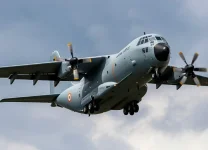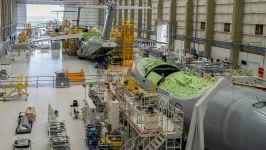- Views: 3K
- Replies: 23

The Indian Air Force's (IAF) ambitious quest for a new Medium Transport Aircraft (MTA) is gaining momentum, with early indications suggesting the Embraer C-390 Millennium might present a cost-effective solution compared to its rivals.
Sources reveal that Embraer's proposal for the IAF includes not only the C-390 aircraft but also a comprehensive Technology Transfer (ToT) package, enabling local manufacturing.
This offering comes with an estimated per-unit cost of $140-160 million, potentially undercutting the anticipated price for the Lockheed Martin C-130J Hercules, a long-standing favorite in the IAF's fleet.
While the C-130J enjoys a proven track record within the IAF, having procured six units in 2012 for $1.05 billion, its current international unit cost falls within the $130-167 million range. The Airbus A400M, another contender, offers a higher payload capacity but carries a significantly higher price tag, ranging from $220-240 million per unit.
The IAF has yet to issue a formal Request for Proposal (RFP) detailing unit costs based on the final procurement figures. While Embraer's initial offer appears financially attractive, the IAF will conduct a thorough evaluation, assessing the C-390's capabilities against its operational requirements.
One key advantage of the C-390 is its superior cargo capacity. Its robust structure allows it to transport heavier payloads (up to 26,000 kg) compared to the C-130J's 20,227 kg limit. This enhanced capacity could prove a decisive factor for the IAF.
India's emphasis on local manufacturing adds another layer of complexity. While the chosen aircraft will be produced domestically, potentially incurring additional upfront investment costs, this approach aligns with India's goals of self-reliance and long-term economic benefits.
Although the initial price estimates position the Embraer C-390 favorably, the IAF's final decision will rest on a comprehensive evaluation, considering factors such as unit cost, operational capabilities, and the long-term advantages of local manufacturing. The competition promises to be a close one between the C-390 and the C-130J, with the IAF's strategic priorities ultimately determining the winner.


